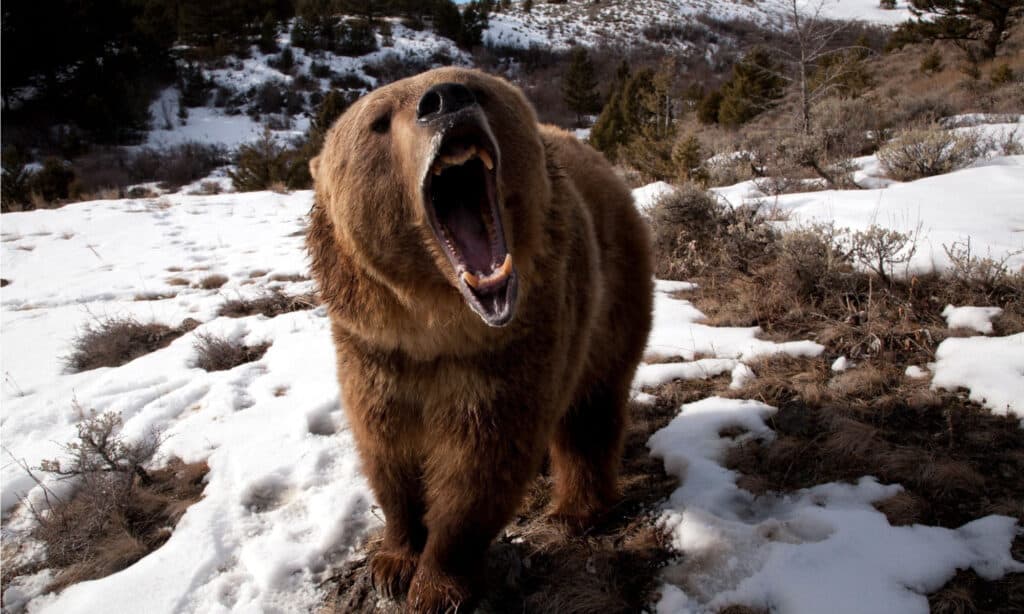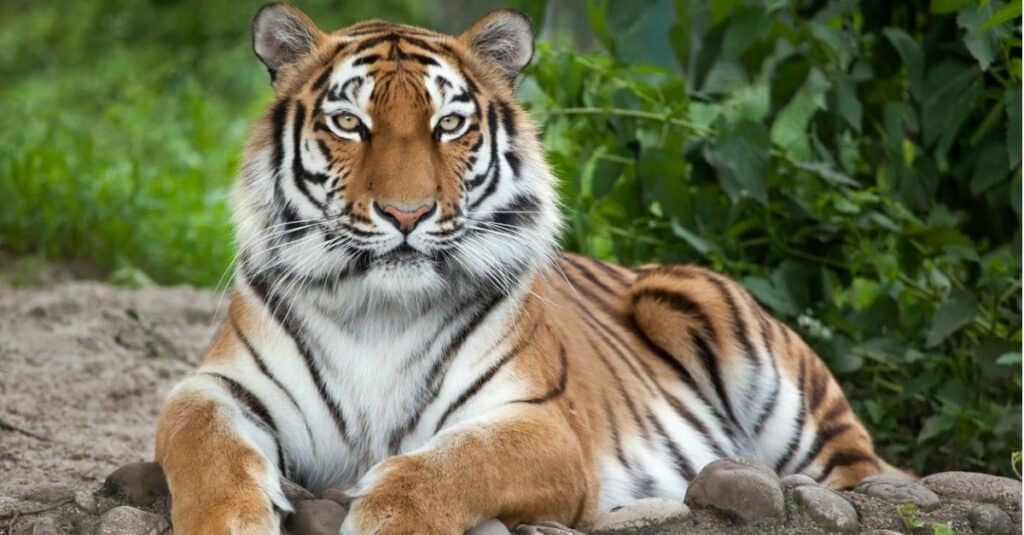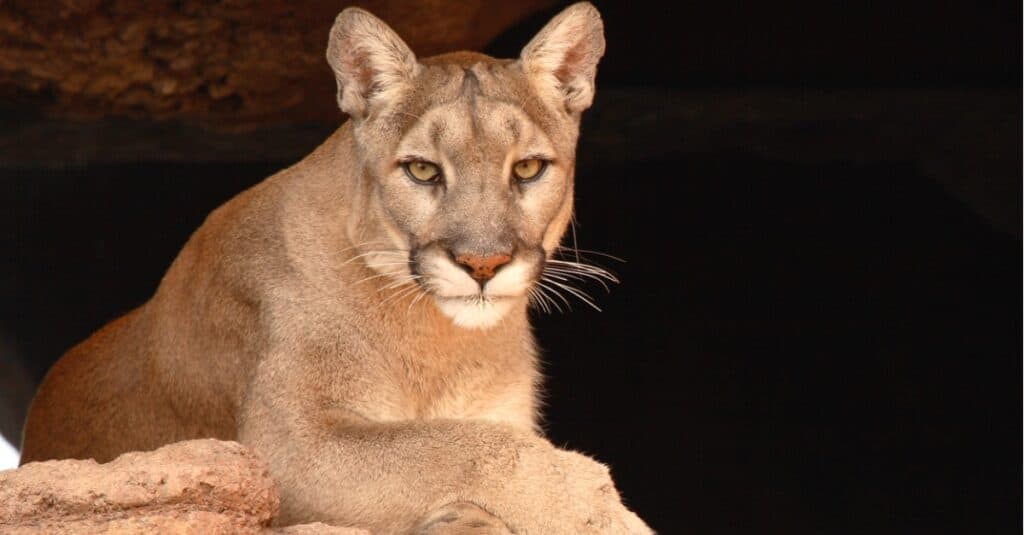Bears are extraordinarily intelligent mammals of the family Ursidae. They have unique large bodies with stocky legs, small rounded ears, long snouts, short nails, shaggy hair, and plantigrade paws with five non-retractile claws. Most bears vary in size and weight, depending on the species, geographical location, and the type of food they eat. With their title as apex predators, do they have any predators? What eats bears?
Background On Bears
Bears are giant mammals that live up to 25 years in the wild and 50 years in captivity. They are typically lone animals with an extraordinary sense of sight, hearing, and smell. Fortunately for them, their sixth sense enables them to smell food, cubs, mates, or predators miles away.
There are only eight species of bears worldwide, with different characteristics based on their species. These species include brown bears, North American black bears, polar bears, giant pandas, sloth bears, spectacled bears, sun bears, and Asiatic black bears (moon bears). Intriguingly, the biggest of them all is the brown bear.
What Eats Bears?

Bear cubs often fall prey to tigers, wolves, cougars, and coyotes.
©Falade Adewale/Shutterstock.com
Tigers, wolves, cougars, bobcats, coyotes, and humans eat bears, but these predators only focus on bear cubs rather than adult bears. The adult bears are too aggressive and dangerous to prey on – obviously a reason they are at the top of the food chain. Bears are always ready to attack anyone or anything that poses a threat, and it is no surprise why they are often referred to as the kings and champions of their habitat.
Bear Predators: Tigers

A
tiger
will eat any large prey it can kill, including bears.
©iStock.com/wrangel
Bears and tigers rarely occupy the same habitat; however, when there is a battle encounter between these two, tigers can be more dangerous to bears. Tigers are among the most stealthy wild cats. Amazingly, they ambush, move at the most unpredictable moment, and attack their prey from the most advantageous position. For a successful bear kill, a tiger would attack from behind and bite the bear with its long, thin teeth and possibly leave the bear for death after much bleeding.
Bears Predators: Wolves
It is a known fact that wolves hunt in packs, which is the only thing that may threaten an adult bear in the wild. Wolves(in packs) hang around their prey (bear in this case), seeking the right opportunity to attack. A single wolf wouldn’t threaten an adult bear, so it typically retreats at the sight of an adult bear. However, it can perfectly startle and kill a bear cub off-guard.
Bear Predators: Cougars

With the help of their sharp claws and teeth, cougars kill bear cubs.
©iStock.com/gatito33
Intriguingly, cougars are blessed with sharp claws, fangs, and teeth that enable them to grab, bite, and tear bear cubs apart. These large cats of the family Felinae make their hunt while looking for strayed bear cubs who are away from their mother’s protective arms. Fortunately, compared to these giant mammals, their physique makes them more agile and lighter for hunting baby bears. They launch their surprise attack by monitoring and ambushing their prey like their other counterparts – tigers.
Bear Predators: Bobcats
Bobcats are considerably smaller than bears and would be no match for adult bears. However, they are best able to have a wild hunt on young unprotected cubs or baby bears that have strayed out of their mother’s covering.
Bear Predators: Coyotes
Like bobcats, coyotes, without a doubt, are no match for bears. Coyotes can only threaten bear cubs, especially when they are in their numbers. They mostly go after bear cubs that are not well protected. Additionally, a weak or wounded bear could also be a bonus for an adult coyote.
Bear Predators: Human
Bears have been hunted since the prehistoric period, both for their meat and fur. In many parts of the world, bears are hunted for specific organs, such as their gallbladder (used in traditional medicines) and their beautiful fur, while other bears are hunted for game.
Do Bears Eat Each Other?
According to scientists, climate change could turn polar bears into cannibals because more prolonged seasons without ice keep them from getting to their regular diets (berries, fish, insects, and other mammals). From reports, polar bears eat each other, especially since humans started encroaching their habitat.
Other Animals That Eat Bears
- Eagles: Eagles eat dead or severely wounded bears.
- Vultures: Vultures feed on a wide variety of food, including carcasses, and won’t turn a blind eye to dead or wounded bears.
- Mountain lions: Mountain lions primarily do not prey on adult bears. However, on an occasion of territorial conflict, mountain lions could kill bears, especially younger bears.
- Dog packs: Karelian bear dogs do not necessarily kill and eat bears but protect their owners by sniffing bear dens and pushing them out of the campgrounds.
A list of Animals That Eat Bears
Here is a list of animals that eat bears:
- Tigers
- Coyotes
- Bobcats
- Wolves
- Cougars
- Eagles
- Mountain lions
- Human
- Vultures
- Dog packs
How Do Bears Defend Themselves?
Bears make themselves look more significant than their standard size.
When bears get angry or afraid of danger, they fluff up their fur, stand on their hind legs, growl loudly, pound their paws on the ground, or charge towards their enemy.
Bears maximize their body structure.
Bears generally have the most extensive body covered with coated layers of hairs, which provides them with a natural layer of protection. Polar bears have powerful forearms, sharp claws, and strong jaws to hold down enemies and ward off other predators.
The photo featured at the top of this post is © PhotocechCZ/Shutterstock.com
Thank you for reading! Have some feedback for us? Contact the AZ Animals editorial team.







